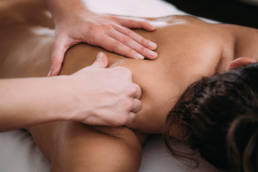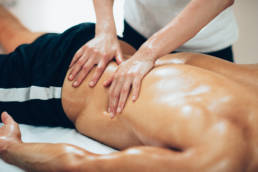Scar Tissue Massage Services
Perth Wellness Centre is the leading provider of allied health services. We are committed to helping you improve your health and overall wellbeing!
When an injury occurs, the body does its best to repair the injured area with collagen. Instead of original tissue, scar tissue and adhesions are formed. While original tissue will grow in an organized fashion, scar tissue will grow in multiple directions.
Scar tissue can be bone, skin, or connective tissue. It begins to form soon after the injury. If the muscle is injured, scar tissue will form in the muscle during the healing process. Following a fracture, scar tissue of the bone, known as callus, will form. Scar tissue of the skin can leave a scar that you might consider to be unsightly.
Even though scar tissue is the body’s own form of healing itself, it can cause a great deal of trouble. It can easily attach itself to underlying structures such as fascia, ligaments, tendons or skin. This can cause your muscles to tighten from the tension of the scar tissue’s collagen strands.
How to Treat Scar Tissue
One way to address this issue is through scar tissue massage. This is a slow process as it is best accomplished when it is done in stages. Your therapist will only work on the area a little at a time.
If the process of scar tissue massage is carried out too quickly, you run the risk of reinjuring the muscle which would, in turn, promote the growth of more scar tissue. The timing of scar tissue massage is also important. It cannot be done too soon following your injury or surgery.
Step One: When the scar tissue massage begins, your therapist will massage around the scar itself. This releases any fluids and toxins and begins the process of relaxing the surrounding normal tissues. This reduces the pressure on the scar tissue and adhesions. This also will release some of the physical sensations in the area surrounding the scar tissue.
Step Two: Using techniques similar to myofascial release using slow steady pressure. This constant pressure is only let up when your therapist feels the tissue release. Since scar tissue grows in a multidirectional fashion, your therapist will apply pressure in whatever direction they feel the scar tissue. Your therapist, at this point, is slowly spreading apart the fibers of the muscle to reach the adhesions.
Step Three: The treatment now focuses on individual fibers, and your therapist will use slow strokes that only move when the tissue releases. They will continue these types of strokes as they further release the scar tissue in fibers that have already been spread apart.
What to Know About a Scar Tissue Massage
Scar tissue massage can resolve a lot of the discomfort caused by the scar tissue and adhesions that occur naturally in the healing process. Once these tissues have been loosened, the real work of strengthening the area can begin.
Related Services
Benefits of Scar Tissue Massages
- Loosens muscles tightened by scar tissue and adhesions.
- Focuses on specific areas of scar tissue during its varying phases development.
- Effective for preparing healing muscles for rehabilitation.
- Reduces the development of adhesions which reduces the possibility of future complications.
- Reduces the level of scar tissue and adhesions and promotes recovery.




